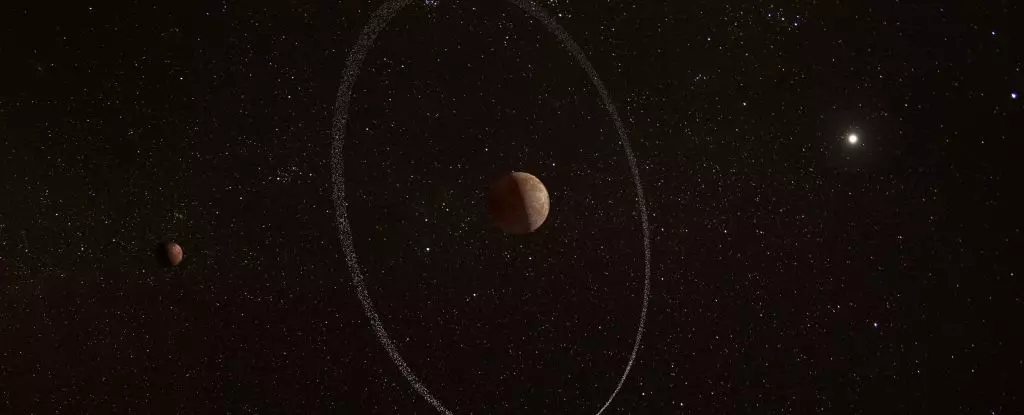The Solar System is home to a fascinating array of celestial bodies, from hot moons to cold moons, and even moons with liquid surfaces. Among the plethora of moons out there, one peculiar anomaly stands out – the absence of ringed moons. Despite the fact that half of the planets in the Solar System boast rings around them, not a single moon has been found with its own ring system. This raises an intriguing question: why don’t moons in the Solar System have rings?
Astrophysicist Mario Sucerquia and his team from the Adolfo Ibáñez University in Chile pondered over this question. They delved into the concept of ringed moons beyond the Solar System, referred to as cronomoons, and started to question the underlying reasons for the lack of moon rings in our own cosmic neighborhood. The prevalence of rings around giant planets, centaurs, and asteroids raised doubts about why moons in the Solar System seemed to be ring-less.
Simulations and Findings
To investigate this cosmic conundrum, Sucerquia and his colleagues turned to N-body simulations. They simulated various scenarios to study the formation and stability of ring systems around moons in the Solar System. Surprisingly, the researchers discovered that despite the gravitational complexities of moons, planets, and neighboring satellites, ring structures around moons proved to be remarkably stable in many cases.
Past Evidence and Speculations
There are tantalizing hints on some Solar System moons that suggest the presence of rings in the distant past. Debris orbiting Saturn’s moon Rhea and the equatorial ridge on Saturn’s moon Iapetus are believed to be remnants of ancient ring systems. The researchers postulate that factors like radiation pressure, magnetic fields, internal heating, and plasma from magnetospheres might have contributed to the disappearance of moon rings over time.
A Stroke of Unluckiness
Sucerquia laments the possibility that we may have missed witnessing moon rings due to sheer bad luck. Our observations of the Universe might have coincided with a period when ring systems around moons were no longer present. Just like the fleeting beauty of Saturn’s rings, which may eventually dissipate, moon rings could have existed in the past, leaving only traces behind.
Looking ahead, Sucerquia proposes further simulations that take into account additional parameters like radiation pressure and magnetic fields to deepen our understanding of the absence of moon rings. Additionally, close scrutiny of moons for signs of past ring systems, such as Iapetus’ mysterious ridge, could provide valuable insights into this cosmic mystery. The quest for ringed moons extends beyond our Solar System, as astronomers hunt for alien worlds with moons adorned by majestic ring systems.
The enigma of moon rings in the Solar System continues to intrigue astronomers and stargazers alike. While the absence of observable moon rings may seem disappointing, it opens up a realm of possibilities for future discoveries and explorations. As we gaze at the night sky and ponder the mysteries of the cosmos, the allure of moon rings remains a tantalizing and elusive cosmic enigma.


Leave a Reply